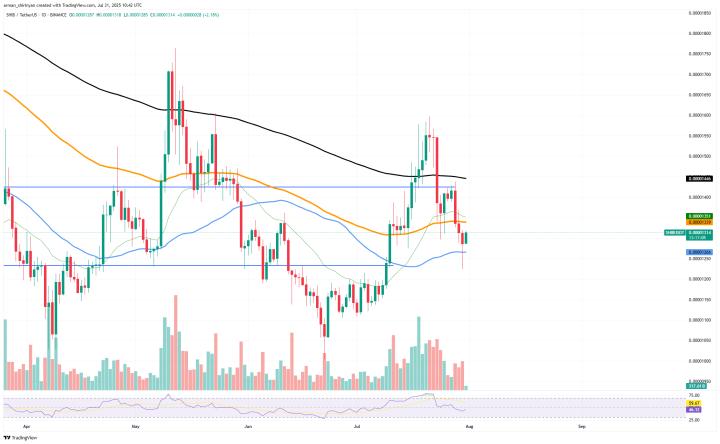After BTC, ETH has become the "hot cake" in the eyes of major institutions, and Ethereum's second decade may be heading towards the institutional era.
Original:ETH as a Productive Treasury Asset
Author:Obol Collective
Translated by:Felix, PANews
Cover:Photo by Shubham Dhage on Unsplash
Key Points:
- Ethereum is entering a new decade and a brand new era. As the world's most secure and decentralized programmable blockchain, it has become the preferred platform for institutions. Just as Bitcoin won the status of "digital gold", Ethereum's native asset is also gaining recognition as "scarce digital oil".
- Major institutions are competing to accumulate ETH as their long-term strategic reserves, with strategic ETH reserves increasing by over 1.7 million ETH by 2025. As these institutions increase their ETH holdings, it has become the first interest-bearing digital commodity.
- ETH can be viewed as an internet bond, with staking providing institutions with a risk-free way to accumulate returns. As Ethereum's adoption rate continues to increase, ETH becomes increasingly scarce, and institutions will turn their attention to staking and distributed validators due to their security advantages.
- Institutions recognize that Ethereum will drive the development of the global on-chain economy. This is one of the main catalysts for Ethereum's future as a trillion-dollar network.
The Institutional Era of Ethereum Has Arrived
Institutions are embracing Ethereum. As major Wall Street players discover the potential of innovations like stablecoins, DeFi, and RWA, Ethereum is becoming their preferred decentralized platform. Institutions like BlackRock, JPMorgan, and UBS are building on Ethereum because it dominates these vertical sectors while maintaining significant decentralization and security advantages.
ETH is also gradually becoming a reserve asset. In recent years, several large enterprises have incorporated BTC into their reserve assets. Recently, a wave of listed companies, DAOs, and crypto-native foundations have begun accumulating ETH as a long-term holding asset. Today, over 1.7 million ETH (valued at $5.9 billion) has been locked in reserve assets, with the total reserves growing twofold year-on-year.
Ethereum is the next global financial layer. Institutional investors are reserving ETH because they recognize it as the monetary foundation of this layer. ETH is the first digital asset that simultaneously possesses reliable neutrality, scarcity, utility, and yield. BTC is recognized as the first reserve asset in cryptocurrency, while ETH is the first yield-generating reserve asset.
This report will focus on the first institutions to adopt ETH as a strategic reserve asset. It will also look forward to the future, explaining how these institutions will next stake ETH, the role of distributed validators in establishing institutional staking standards, and why the race to adopt ETH as a reserve asset will become a catalyst for Ethereum's trillion-dollar valuation.
1. Why Institutions Prefer "Digital Oil" Over "Digital Gold"
Bitcoin undoubtedly became the world's first digital gold. Bitcoin is a non-sovereign store of value with unique attributes that are attractive to institutions. However, Ethereum is a more dynamic asset because it drives the global on-chain economy. As the world moves on-chain, Ethereum's utility and scarcity will increase simultaneously. If Bitcoin is digital gold, then Ethereum is digital oil.

Institutions are expected to continue favoring digital oil over digital gold in the coming decade for three reasons:
1. BTC is idle, while ETH is building. Bitcoin has succeeded by acting as a passive value storage tool. In contrast, Ethereum's success is due to its continuous high-efficiency output. Ethereum is the indispensable fuel for the world's most decentralized and secure smart contract blockchain. Every operation in Ethereum's vast decentralized financial ecosystem, every NFT minting, and every Layer 2 network settlement requires ETH as a transaction fee. Since the EIP-1559 went live in August 2021, Ethereum has burned approximately 4.6 million ETH, valued at around $15.6 billion at current prices, indicating that this asset plays the role of digital oil in the on-chain economy. Today, Ethereum secures approximately $237 billion in value across L1 and top L2 networks, and demand for ETH will continue to grow as the global economy moves more on-chain. Ethereum holds a 57% market share in the RWA market and a 54.2% share in total stablecoin supply. In short, Ethereum leads in multiple indicators, and ETH is the driving force of its ecosystem.
2. BTC has an inflationary tendency, while ETH is gradually becoming deflationary. BTC's supply plan is fixed, with the current issuance rate around 0.85%, which will programmatically decrease over time. As block rewards halve every four years, miners will increasingly rely on transaction fee income to sustain operations. Some believe BTC's security budget is a potential threat. Ethereum adopts a different monetary policy directly linked to economic activity. ETH's total issuance cap is 1.51% to incentivize network security, but with approximately 80% of transaction fees being burned through EIP-1559, the net issuance rate has averaged only 0.1% annually since the merge. ETH often experiences net deflation, and with growing demand for Ethereum block space, the total supply (currently slightly below 120 million ETH) is expected to decline. In other words, as Ethereum becomes more widespread, ETH will become increasingly scarce.
3. BTC generates no yield, while ETH is a yield-generating asset. Bitcoin itself does not produce any yield. However, ETH is a high-yield digital commodity. ETH stakers can lock up Ethereum as validators and currently earn approximately 2.1% actual yield (nominal yield - new issuance). Stakers can receive ETH issuance and part of transaction fees (the portion not burned) without counterparty risk, which incentivizes long-term holding and active network participation. ETH differs from all other major crypto assets in that validator yields increase as Ethereum's economic throughput expands.
ETH as a Global Leading Reserve Asset
ETH has become a global leading reserve asset due to its unique attributes. It satisfies three core requirements in a way that no other asset can:
Pure settlement collateral. As the new economy continues to be built on tokenized assets bearing issuer and jurisdictional risks, the financial system needs a trustlessly neutral, non-sovereign collateral asset. That asset is ETH. Apart from BTC, ETH is the only "pure" collateral in the on-chain economy, completely immune to external counterparty risks. With a $237 billion guaranteed value, ETH becomes the cornerstone of the next-generation financial system, with censorship resistance.
High liquidity. ETH is the most liquid and primary asset in DeFi trading pairs. In the on-chain economy, ETH functions similarly to the US dollar in traditional forex markets. ETH's deep liquidity and broad utility have prompted DAOs, foundations, and public companies to compete in stockpiling ETH as a strategic asset. "Strategic ETH reserves" are rapidly expanding, and hoarders benefit from its programmability. BTC sits idle in treasuries, while ETH can be deployed through use cases like staking and collateralized lending.
Protocol-native yield. Corporate finance executives seek yield, but obtaining it without significant credit or counterparty risk is challenging. ETH staking offers 2-4% risk-free yield, directly sourced from L1 staking rewards. This means finance executives can acquire an efficient, cash-flow-generating tool for reserves, directly linking their balance sheets to the growth and security of the new economic base layer.
"Internet Bond"
[The translation continues in the same manner for the remaining text, maintaining the specified translations for specific terms.]For institutions seeking returns, ETH staking is the best approach, as it offers near-risk-free returns compared to other strategies.
However, although financial directors recognize that native staking is evidently a strategically wise choice, they have other factors to consider. For these institutions, the issue is not only whether to stake, but also how to stake to achieve institutional-level security and resilience. While traditional validators are effective, they create single points of failure. Distributed validators (DVs) solve this problem. Distributed validators have the following characteristics:
- A single Ethereum validator (staking over 32 ETH) is distributed across multiple nodes.
- Distributed key generation (DKG) is used to avoid single point private key risks.
- It remains functional even if up to half of the nodes are offline.
- Achieves the same or better performance compared to traditional validators.
Although the distributed validator (DV) field is still in its early stages, many institutions building strategic Ethereum reserves are now beginning to use DVs. They can benefit from the following:
- Institutional-level key security: DV keys are never stored in a single location, and no single operator can access them, providing users with a higher level of security.
- Fault tolerance: Users do not face risks from a single operator, such as slashing or missing rewards.
- Middleware design: Top global staking operators trust middleware infrastructure like Obol's Charon, providing them a way to decentralize their operations without major modifications.
- No need to hold long-tail assets: The Treasury does not need to hold additional long-tail assets for ETH staking. No need to consider collateral assets, margins, or liquidation mechanisms.
4. Why does ETH harbor a trillion-dollar opportunity?
ETH is no longer a misunderstood speculative asset. After Bitcoin, Ethereum is becoming an institutional asset held by large enterprises, DAOs, and other institutions. But ETH has advantages that BTC does not: it is the foundation of the Ethereum network, which is the cornerstone of the next-generation financial system. As the first "productive" reserve asset, ETH simultaneously serves as a credibly neutral value store, settlement collateral, and interest-bearing reserve asset.
Ethereum has laid the foundation for the next-generation financial system. Today, institutions also recognize this.
As adoption increases, ETH's unique position makes it likely to become even more scarce. As the base currency of Ethereum, ETH has a deflationary mechanism that will reduce its supply as the network develops. No other asset can simultaneously possess these characteristics and provide credible neutrality.
In Ethereum's first decade, it established the foundational layer for transformative innovations such as DeFi, stablecoins, Non-Fungible Tokens, and ICOs.
As its second decade begins, Ethereum is entering its institutional era. Major companies view ETH as the primary "productive" asset, and the accumulation race is accelerating. In this new era, Ethereum's path to becoming a trillion-dollar network has never been clearer.
Disclaimer: As a blockchain information platform, the articles published on this site represent only the personal views of the authors and guests, and are unrelated to Web3Caff's stance. The information in the article is for reference only and does not constitute any investment advice or offer. Please comply with the relevant laws and regulations of your country or region.







